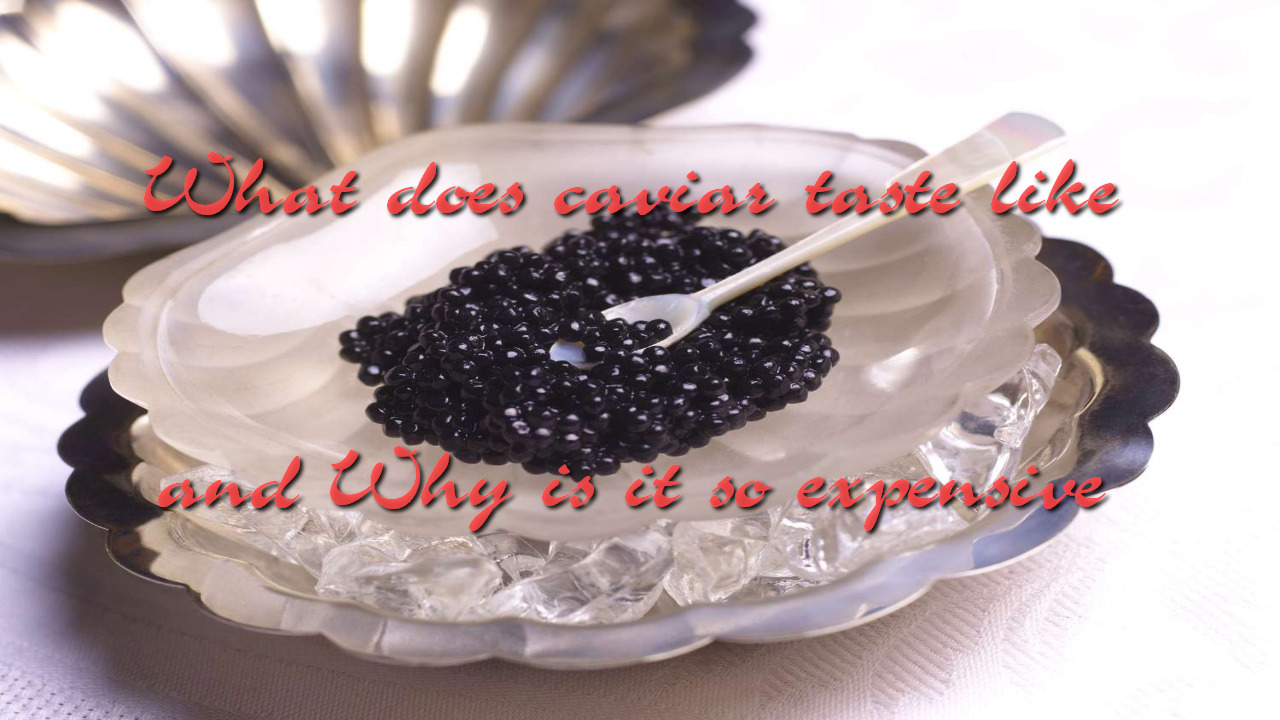What does caviar taste like and Why is it so expensive

Caviar, often referred to as the epitome of luxury in the culinary world, has a longstanding history as a delicacy enjoyed by royalty, aristocrats, and food connoisseurs. This article delves into the exquisite taste of caviar and explores the factors that contribute to its premium price tag.
The Delicacy of Caviar

Caviar, derived from the roe or eggs of sturgeon and other fish, is renowned for its unique flavor profile and indulgent texture. This luxury food item has a reputation for being a symbol of opulence and refinement.
A Gastronomic Experience: What Does Caviar Taste Like?
The taste of caviar is a sensory experience unlike any other. Its flavor is often described as buttery, briny, and subtly fishy. For example Caspian Monarque caviar has delicate, slightly salty notes are accompanied by a rich, smooth texture that melts in your mouth, leaving behind a lingering essence of the sea.
The Rarity Factor: Types of Caviar

Caviar comes in various types, each offering distinct taste variations. Beluga, Osetra, and Sevruga caviar are among the most sought after. Beluga caviar is celebrated for its large, glossy eggs and mellow, buttery taste, while Osetra boasts a nutty and slightly fruity flavor. Sevruga caviar, on the other hand, presents a more intense taste with smaller eggs.
Harvesting and Production
The process of obtaining caviar is meticulous and labor-intensive. Traditionally, caviar was harvested from wild sturgeon found in the Caspian Sea. However, overfishing and environmental concerns have led to the development of sustainable aquaculture practices to ensure the survival of sturgeon species and the continuation of caviar production.
Caviar’s Role in Culture and History
Throughout history, caviar has held a significant place in various cultures. From ancient Persia to the lavish banquets of the Russian Tsars, caviar has been revered as a luxurious offering, often reserved for celebrations and special occasions.
The Economics of Caviar: Why is it So Expensive?

The high price of caviar can be attributed to several factors. The slow maturation of sturgeon, which can take years, contributes to the scarcity of the roe. Additionally, the delicate process of harvesting and processing caviar demands a skilled workforce and specialized equipment. The rarity, craftsmanship, and exclusivity associated with caviar also drive its market value.
Sustainability Concerns and Future Outlook
As awareness of environmental issues grows, sustainable caviar production methods have gained prominence. Efforts to protect sturgeon populations and ensure responsible harvesting are essential for the preservation of this delicacy. The future of caviar lies in striking a balance between luxury and environmental consciousness.
Conclusion
In the realm of gastronomy, caviar remains an unparalleled luxury, captivating the senses with its exquisite taste and texture. Its status as a prized delicacy is intricately woven into a tapestry of history, culture, and economics. As we move forward, the challenge is to continue relishing caviar’s splendor while embracing sustainable practices to safeguard its legacy for generations to come.